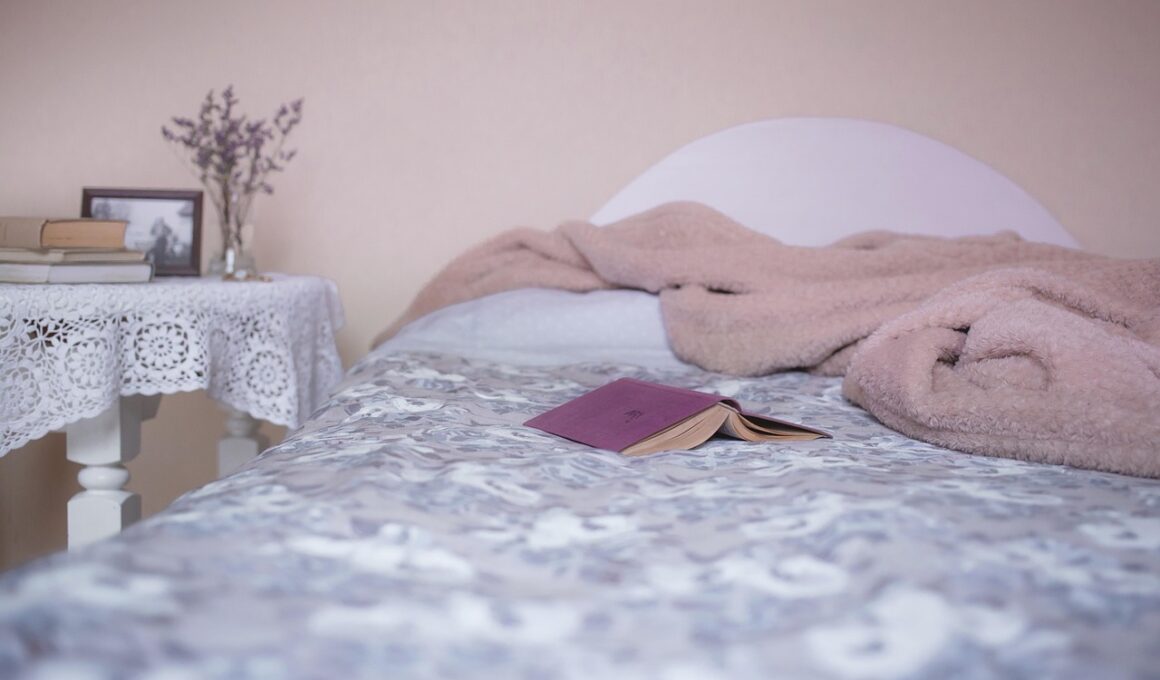Why the ‘Go To Bed’ Command is Essential for Your Dog’s Discipline
The ‘Go to Bed’ command is a fundamental training cue that enhances your dog’s discipline. This command helps define boundaries and provides your pet a sense of security. By teaching your dog to go to its designated sleeping area upon command, you foster a calming atmosphere in your home. It’s essential to create a routine surrounding this command to ensure your dog understands its importance. This article will explore the aspects that make the ‘Go to Bed’ command vital for your canine companion. Consistency in training is crucial, as dogs thrive on routines. The repetition of this command will ensure that dogs learn the boundaries set for them. Over time, they will associate going to bed with a positive experience, reinforcing good behavior. Training dogs using this command can often improve other behavioral issues. Many owners notice a decrease in hyperactivity and an increase in relaxation during evenings. In turn, this enhances the overall relationship between you and your dog, leading to a more enjoyable companionship.
Establishing the ‘Go to Bed’ command also aids in managing your dog’s behavior during busy times, like when guests visit. When people are over, it may become chaotic, leading to overwhelming excitement for your dog. By commanding your dog to go to bed, you provide it with a quiet space, reducing stress for both you and your furry friend. This behavior teaches your dog to remain calm and settle down amidst distractions. Furthermore, the command can promote a sense of independence, which is essential for any dog. Dogs that understand when to relax are less likely to suffer from anxiety and stress-related issues. As you practice this command, consider using an engaging tone and rewarding your dog consistently with treats. Pleasant associations will encourage obedience and reinforce the lessons learned. Another key aspect is patience; mastering this command doesn’t happen overnight. Training should be a fun, repetitive experience for your dog. Keep sessions short, engaging, and ensure the environment is free from distractions. Ultimately, reinforcing the ‘Go to Bed’ command contributes significantly to your dog’s overall temperament.
Benefits of the ‘Go to Bed’ Command
One notable benefit of the ‘Go to Bed’ command is its role in improving your dog’s impulse control. When dogs are trained to settle in a designated spot, they learn to manage their excitement well, especially around temptations. Guided practice helps dogs recognize the difference between active playtime and quiet relaxation. They will subsequently respect boundaries better, especially when visitors are around the home. Better impulse control often translates to fewer behavioral issues, creating a harmonious environment. Additionally, the command assists in managing your dog’s natural instincts. For example, some dogs may be naturally inclined to chase after fast-moving objects or sounds in the household. By reinforcing the ‘Go to Bed’ command, pet owners can curb this instinctive behavior and thus foster a quieter living space. The command can also prevent unnecessary misunderstandings between your dog and other pets. Establishing safe spots for all pets helps reduce territorial disputes, making it easier for them to coexist peacefully. Training in a consistent manner ensures every pet understands their areas, improving interactions overall and leading to a more relaxed household.
Creating a structured environment through the ‘Go to Bed’ command is pivotal in building emotional security for your dog. Dogs are creatures of habit. They often crave stability and appreciation from their owners above all else. Hence, knowing exactly where to go when asked fosters a sense of belonging and reassurance. Furthermore, having a designated place helps in reinforcing house rules. For instance, if your dog has mastered this command, it understands which areas are off-limits during meal times or when conducting family activities. This understanding redounds to better behavior as the dog internalizes its role within the family dynamic. In conjunction with this command, utilizing a comfortable bed or crate can create an inviting space for your pet. Actual comfort encourages your dog to comply and see their sleeping area as a positive destination. Encourage your dog to settle down in its bed with frequent praise so your canine friend can associate it with positive experiences. Ultimately, providing this nurtured environment helps increase your dog’s self-esteem, fostering a more peaceful demeanor.
Effective Training Techniques
When training your dog on the ‘Go to Bed’ command, it is essential to implement effective strategies for the best results. First, choose a specific mat or bed that your dog will associate with this command. The key is consistency. Ensure you only use this designated spot for the command to avoid confusion. Once you decide on the location, initiate the command. Use a clear, assertive voice while cueing your dog. Pair the command with positive reinforcement. When your dog complies with the order, reward it immediately with praise or a treat. This is crucial in building a positive connection to the command. Repeating this exercise will help your dog learn what is expected over time. Gradually introduce distractions, making the training more challenging as your dog becomes adept in responding. Slowly increasing difficulty levels will clear any doubts your dog might have concerning the command and reinforce your established authority. Keep training sessions brief and enjoyable, allowing your dog to understand progress while not feeling overwhelmed.
Consistency in your training routine goes hand in hand with effective techniques. Dog owners should ensure they remain patient and persistent throughout the process. It’s important to maintain a relaxed demeanor that will ease any stress for your dog while training. Inconsistency or frustration can lead to confusion regarding commands, especially if your tone varies. Additionally, timing and frequency play pivotal roles during this training method. Dogs are more impressionable during their energetic hours, which make them more responsive to commands. Pick times throughout the day to practice the command, embedding it into their daily routine. Another technique involves incorporating ‘Go to Bed’ during other activities, like feeding or guest visits. Introducing the command in various scenarios will strengthen your dog’s understanding. Over time, dogs will recognize the pattern to that command and respond accordingly. Trainers can even incorporate different cues, such as gestures, to communicate more effectively. By enhancing clarity in commands, dog owners will see more positive results and a stronger bond formed with their pets through trust.
Conclusion and Future Training
In conclusion, the ‘Go to Bed’ command is a pivotal aspect of your dog’s discipline and well-being. Teaching this command effectively contributes to a calmer household environment and fosters a positive bond with your pet. Furthermore, as illustrated throughout this article, consistency, positive reinforcement, and patience are key factors in successful training. By firmly establishing house rules and creating an inviting space, your dog will learn to appreciate its safe zone. This knowledge boosts its confidence, leading to better behavior in various scenarios. Pet owners are encouraged to apply the strategies discussed, consistently enforcing and reinforcing this command, as doing so lays the groundwork for future training opportunities. As your dog becomes more adept at this command, you can introduce advanced techniques or navigate new environments while maintaining desired behavior. The techniques will eventually streamline future training, leading to a well-disciplined, obedient dog. By focusing on various cues combined with real-life situations, you will enhance your dog’s adaptability. Overall, it’s essential to invest time and patience into the ‘Go to Bed’ command, ultimately enriching your dog’s mental and emotional life.
Establishing a strong training foundation promotes lifelong lessons.


